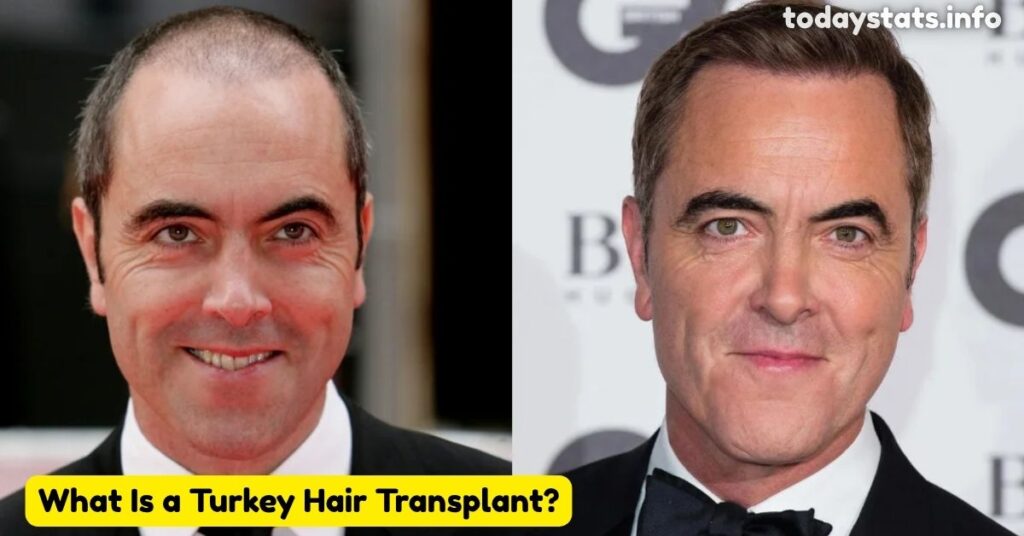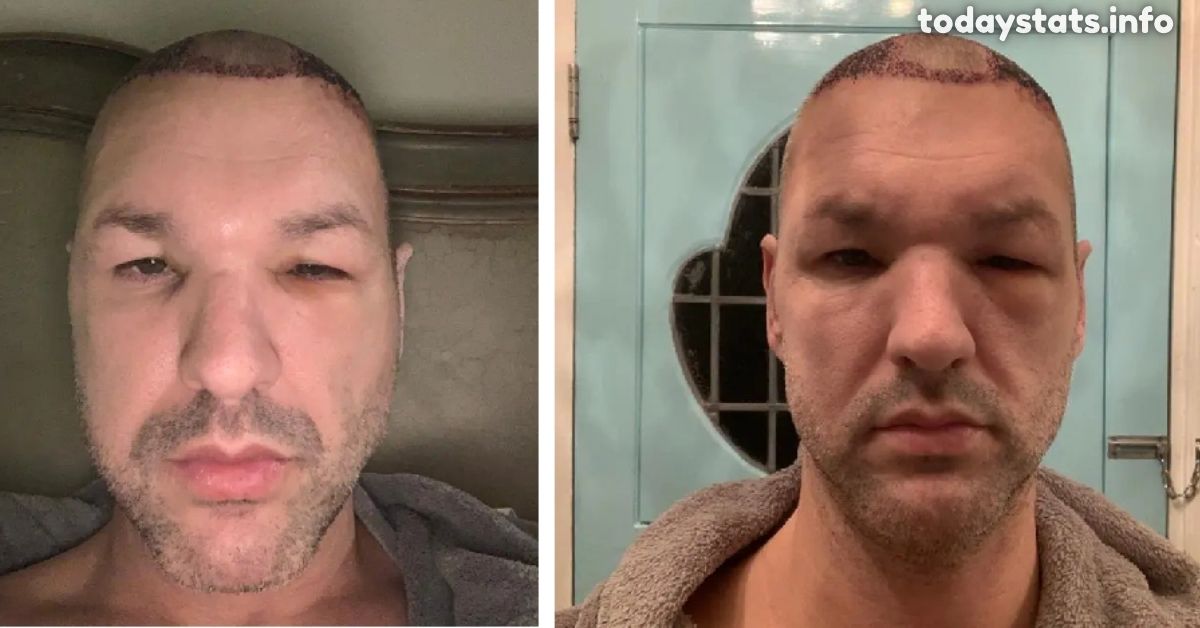Thinking about getting a hair transplant in Turkey? You’re not alone. Thousands of people travel there each year for affordable hair restoration procedures.
But before you book your flight, you should know the risks. Turkey has become a popular destination for medical tourism, especially for hair loss treatment. The lower prices are tempting.
Yet many patients return with complications and poor results. This article explores the potential dangers of Turkey hair transplants and how to protect yourself if you decide to go this route.
What Is a Turkey Hair Transplant?
A Turkey hair transplant is simply a hair transplant procedure performed in Turkey. The country has gained fame for offering these surgeries at much lower prices than Western countries.

The procedure involves taking healthy hair follicles from a donor area (usually the back of your head) and transplanting them to balding areas. When done correctly by qualified surgeons, the results can look natural and last a lifetime.
Turkish clinics often offer package deals that include the surgery, hotel stay, and airport transfers. The popularity of these procedures has exploded in recent years. Turkey now hosts hundreds of clinics dedicated to hair restoration. Some provide excellent care.
Others prioritize volume over quality. This has led to concerns about standards and patient safety. The term “hair transplant Turkey” has become both a marketing slogan and a warning, depending on who you ask.
Types of Hair Transplants
Two main techniques dominate the hair transplant industry worldwide, including in Turkey. Understanding the difference is crucial before making any decisions. Follicular Unit Extraction (FUE) is the most common method used in Turkish clinics. During FUE, the surgeon extracts individual hair follicles from the donor area using a micro-punch tool.
These follicles are then implanted in the recipient area. The procedure leaves tiny dot scars rather than a linear scar. Recovery tends to be quicker, making it popular for international patients with limited time abroad.
Follicular Unit Transplantation (FUT) involves removing a strip of skin from the donor area. The surgeon then dissects this strip into individual follicular units for transplantation. This method can harvest more grafts in one session but leaves a linear scar. Few Turkish clinics now offer FUT, with most marketing themselves as FUE specialists.
Both methods have their place in permanent hair restoration. The problem isn’t the techniques themselves but how they’re applied. In Turkey, the drive to maximize profits sometimes leads to shortcuts in both procedures.
The Cost of a Turkey Hair Transplant
The main attraction of a Turkey hair transplant is the price. Procedures typically cost between $1,500 and $4,000, including accommodation and transfers. The same procedure might cost $10,000 to $20,000 in the United States or Western Europe. This dramatic price difference explains why many people risk the journey.

The low hair transplant cost in Turkey results from several factors. The country has lower labor costs and operating expenses. The government actively supports medical tourism. Many clinics operate at high volume, performing multiple surgeries daily. The Turkish lira’s weakness against major currencies also makes prices attractive to international patients.
However, the saying “you get what you pay for” often applies. The lowest prices typically mean less experienced doctors, less time spent on your procedure, and fewer safety measures. Some clinics employ technicians rather than doctors to perform critical parts of the surgery. This cuts costs but increases risks. The true cost might end up being much higher if you need corrective procedures later.
READ THIS BLOG: Crack the Code: How Semaglutide Dosing Fuels Weight Loss
Over-Harvesting the Donor Site
One serious risk of cheap hair transplants is donor site over-harvesting. Every person has a limited supply of permanent, transplantable hair. This area, called the safe donor zone, sits at the back and sides of your head. Hairs here resist the hormonal effects of male pattern baldness or androgenetic alopecia.
Reputable surgeons carefully calculate how many grafts they can safely extract. They consider your hair density, hair characteristics, and potential future loss. In contrast, some Turkish clinics extract too many grafts in a single session. They might promise 4,000 to 5,000 grafts when your scalp can safely provide only 3,000.
The consequences of over-harvesting can be devastating. Your donor area might develop noticeable thinning or patchy bald spots. Since this area should normally maintain hair for life, the damage is permanent.
No more transplants will be possible. Some patients end up looking worse than before their procedure. Proper planning for long-term hair loss treatment gets sacrificed for immediate dramatic results.
Risks of Too Much Density in the Recipient Scalp
The recipient area faces risks too. Some clinics pack too many grafts into the balding areas. This practice, called over-densification, happens when surgeons promise extremely dense results to attract customers. They place grafts too close together, ignoring the scalp’s blood supply limitations.
Your scalp needs adequate blood circulation to nourish transplanted follicles. When grafts sit too close, they compete for limited resources. This can lead to graft necrosis where the transplanted follicles die. You might notice poor growth, inflammation, or even infection. The scarring that results can prevent future procedures from succeeding.
Proper hair graft placement respects the natural limitations of your scalp. It creates the illusion of density without compromising graft survival. Skilled surgeons know that strategic placement often yields better results than maximum density. They consider your existing hair and future loss patterns when creating a transplantation plan.
Poor Hairline Design
The hairline frames your face. A poorly designed one can make you look unnatural or older. Unfortunately, some Turkish clinics use cookie-cutter approaches to hairline design. They might give you a straight, low hairline regardless of your age, face shape, or ethnicity.
Natural hairline design includes gentle irregularities and appropriate recession at the temples. It should match your facial features and look age-appropriate. A 50-year-old man shouldn’t receive the hairline of a teenager. Many Turkish clinics fail to consider these factors. They focus on covering maximum baldness rather than creating believable results.
Temple hair reconstruction presents particular challenges. This area requires careful angle matching and subtle density shifts. Some clinics either ignore the temples or fill them with incorrectly angled grafts.
The result can look artificial, like a “doll’s head” or “pluggy” appearance. Once placed, grafts are difficult to remove or reposition. You might be stuck with an unnatural look for years.
Wrong Angles and Direction of the Grafts
Hair doesn’t grow straight out of your scalp. Natural hair emerges at specific angles and follows directional patterns. These patterns vary across different scalp regions. Recreating these angles during transplantation requires artistic skill and anatomical knowledge.
Many budget clinics in Turkey rush through the crucial step of creating recipient sites. These tiny incisions determine the angle and direction of your future hair growth. When done hastily or by inexperienced staff, the angles may be incorrect. Your transplanted hair might grow in random or unnatural directions.
Proper hair graft angles should match your natural growth patterns. The front hairline typically grows forward and slightly downward. Crown hairs form a whorl pattern. Temporal hairs follow specific directional flows. When these patterns aren’t respected, the results look obviously transplanted. Even dense growth can’t compensate for incorrect angles. This mistake is essentially permanent and very difficult to correct.
No Follow-up Care after the Transplant
Hair transplant recovery doesn’t end when you leave the clinic. The growth process takes 12-18 months, during which various issues may arise. Proper follow-up care includes monitoring for infections, managing expected shedding phases, and addressing complications.
Many Turkish clinics operate on a “once you’re gone, you’re gone” basis. International patients find themselves thousands of miles away with limited support. You might receive a basic instruction sheet and perhaps a WhatsApp number. But real medical supervision becomes nearly impossible. If complications develop, you’re often on your own.
The lack of comprehensive care extends beyond medical issues. Emotional support during the waiting period matters too. Hair doesn’t grow immediately after transplantation.
Most patients experience temporary shedding before new growth begins. Without proper guidance, many panic during this normal phase. Some even seek unnecessary corrective procedures because they don’t understand the natural growth timeline.
READ THIS BLOG: Glow Up Routine: The Ultimate Guide to soinducorpsetdesmains
How to Choose a Hair Transplant Surgeon?
If you still want to pursue a transplant in Turkey despite the risks, careful selection becomes crucial. Start by researching the actual surgeon, not just the clinic. Many facilities advertise a famous doctor who rarely performs surgeries. Ask directly: “Will Dr. X perform my entire procedure?“
Look beyond flashy before-and-after photos on Instagram. Request to speak with previous patients, especially those who had their procedures over a year ago. Real results take time to manifest. Recent transplants often look good initially but may disappoint long-term.
Hair transplant surgeon qualification varies widely in Turkey. Ideally, your doctor should be a dermatologist or plastic surgeon with specific training in hair restoration. Ask about their education, certification, and how many procedures they personally perform weekly. Be wary if they do more than two major cases per day quality takes time.
Consider the consultation process. A proper evaluation involves examining your donor area density, hair characteristics, and family history of baldness. If a clinic offers a quick quote based only on photos, be skeptical. Responsible surgeons discuss realistic expectations and sometimes decline patients who aren’t good candidates.
Frequently Asked Questions
Are all hair transplant clinics in Turkey dangerous?
No, not all Turkish clinics provide poor service. Some employ highly qualified surgeons who deliver excellent results. The danger lies in choosing based solely on price without proper research.
How can I verify a Turkish surgeon’s credentials?
Ask for their medical license number and check with the Turkish Medical Association. Research their training background and look for membership in international hair restoration societies.
What’s a reasonable number of grafts for one session?
Most experts agree that 2,000-3,000 grafts per session is reasonable for most patients. Be suspicious of promises exceeding 4,000 grafts in a single day.
When should I expect to see results after a hair transplant?
Most patients see initial growth at 3-4 months, with significant improvement at 6-8 months. Final results typically take 12-18 months to fully develop.
Can a bad hair transplant be fixed?
Repair work is possible but challenging. It typically requires specialized surgeons, costs more than the original procedure, and may yield less impressive results due to limited remaining donor hair.
Conclusion
Turkey hair transplants offer tempting affordability, but this comes with significant risks. Over-harvesting, poor hairline design, incorrect graft angles, excessive recipient density, and lack of follow-up care can lead to disappointing or even disastrous results. These mistakes often prove permanent or extremely difficult to correct.
If you’re considering this route, extensive research becomes essential. Look beyond price to evaluate surgeon qualifications, clinic reputation, and comprehensive care practices. Request detailed consultations that assess your specific situation rather than offering one-size-fits-all solutions. Consider that saving money initially might lead to greater expenses for corrective procedures later.

Smith is a seasoned SEO expert with a passion for content writing, keyword research, and web development. He combines technical expertise with creative strategies to deliver exceptional digital solutions.
















